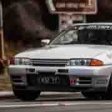V35 Lower control arm bushing replacement labour costs
Announcements
-
Similar Content
-
Latest Posts
-
Saw this video today from Adam LZ. Long story short is he is claiming that the load from the engine fan once the fan clutch heats up(engaged) is increasing the getrag rattle(at idle) when you don't have a dual mass flywheel. Before I go buying an electric fan setup .... Anyone heard of this ? I must admit when my car is cold the getrag is pretty quiet and I do notice the rattle after it is all warmed up. I've always assumed this is due to the gearbox oil temp and tolerances of metal.
-
Yep it sure does. Tone wheel lines up in the same spot perfectly.
-
Something I meant to say when we were chatting the other night about having an open trailer floor being great to work on a car, but you've never used the feature... It's a great place to park a car after doing suspension component changes, and do the tightening of all the bushes with the car sitting at full ride height. Especially when you don't have a 4 post hoist!
-
That is way more science than even I would use. I just eyeball it, not even accounting for the non-verticality of the tape measure when held on the lip and the centre at the same time. +/- 2mm is good enough for the girls I go out with.
-
So, before putting them in I need to understand the stock ride height. This is how I measured it: First, check the diameter of the wheel's centre cap, it was 52mm. Then put a piece of masking tape approximately across the centre and measure 27mm (half) from at least 3 sides to get a reasonable idea of the centre of the wheel cap. Mark that with a horizontal line as one measuring point. Then, directly above the wheel on the guard, put another piece of masking tape in approximately the centre. Use a string line to find out the point on the guard above the centre of the wheel cap and mark that. Then it is simple, just a tape measure to check the distance from centre of the wheel to the centre of the guard. Final results where LF: 381mm RF: 379mm LR: 401mm RR: 400mm Pretty even considering they are 120,000klm old factory springs, lets call that 380 front and 400 rear.
-





Recommended Posts
Create an account or sign in to comment
You need to be a member in order to leave a comment
Create an account
Sign up for a new account in our community. It's easy!
Register a new accountSign in
Already have an account? Sign in here.
Sign In Now